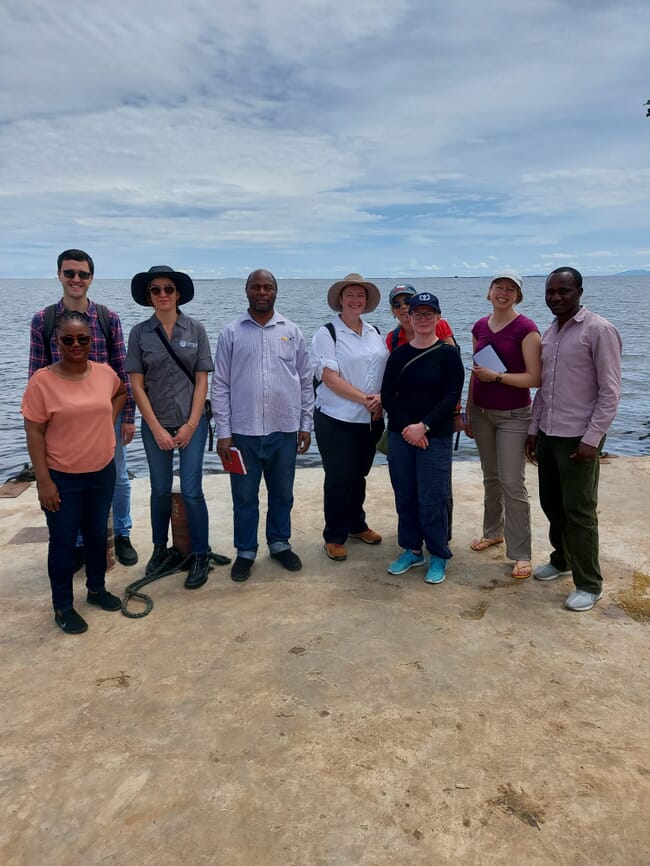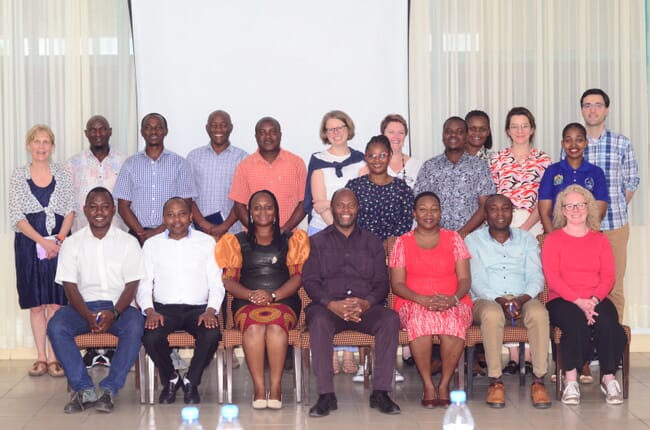
The research team included scientists from Sokoine University of Agriculture (Prof Robinson Mdegela and Dr Janeth George Laurean), The University of Sydney (Dr Francisca Samsing and Dr Kerrie Wiley), The University of Glasgow (Dr Taya Forde, Prof. Cindy Gray and Dr Ângelo Mendes) and the Institute of Aquaculture of the University of Stirling (Prof Margaret Crumlish). © Francisca Samsing
The team – which included social scientists, veterinarians and aquaculture experts from The University of Sydney, The University of Glasgow, the Institute of Aquaculture of the University of Stirling, and Sokoine University of Agriculture – worked to pinpoint the fundamental challenges that need to be tackled to sustain the development of cage aquaculture of tilapia in Lake Victoria.
These included enhanced training and capacity building, securing industry inputs (mainly feed and quality fingerlings), and establishing conducive legal and regulatory frameworks to sustainably expand cage aquaculture in Lake Victoria.
With these strategic areas identified, this international collaboration lays the groundwork for a sustainable and thriving tilapia industry in Lake Victoria, ensuring that the sector's potential is fully realized for the benefit of Tanzania's economy and its people.
Tanzania's tilapia industry is experiencing a rapid expansion, with cage numbers in Lake Victoria jumping from just over 100 in 2016 to nearly 1,000 in 2023 – a 10-fold increase in only 7 years. This growth is part of a larger trend in aquaculture production, which has seen an increase from 4,790 tonnes to 33,525 tonnes of annual production within the same period, with cage aquaculture of tilapia in Lake Victoria being the largest contributor to this production volume.
In recent decades, Tanzania's population has expanded dramatically, rising from 8 million in the 1960s to over 65 million today. This growth has made aquaculture pivotal for food security and employment opportunities. Tilapia farming, in particular, has become a key player in the economy, compensating for the decrease in Nile perch landings in Lake Victoria.

© Francisca Samsing




